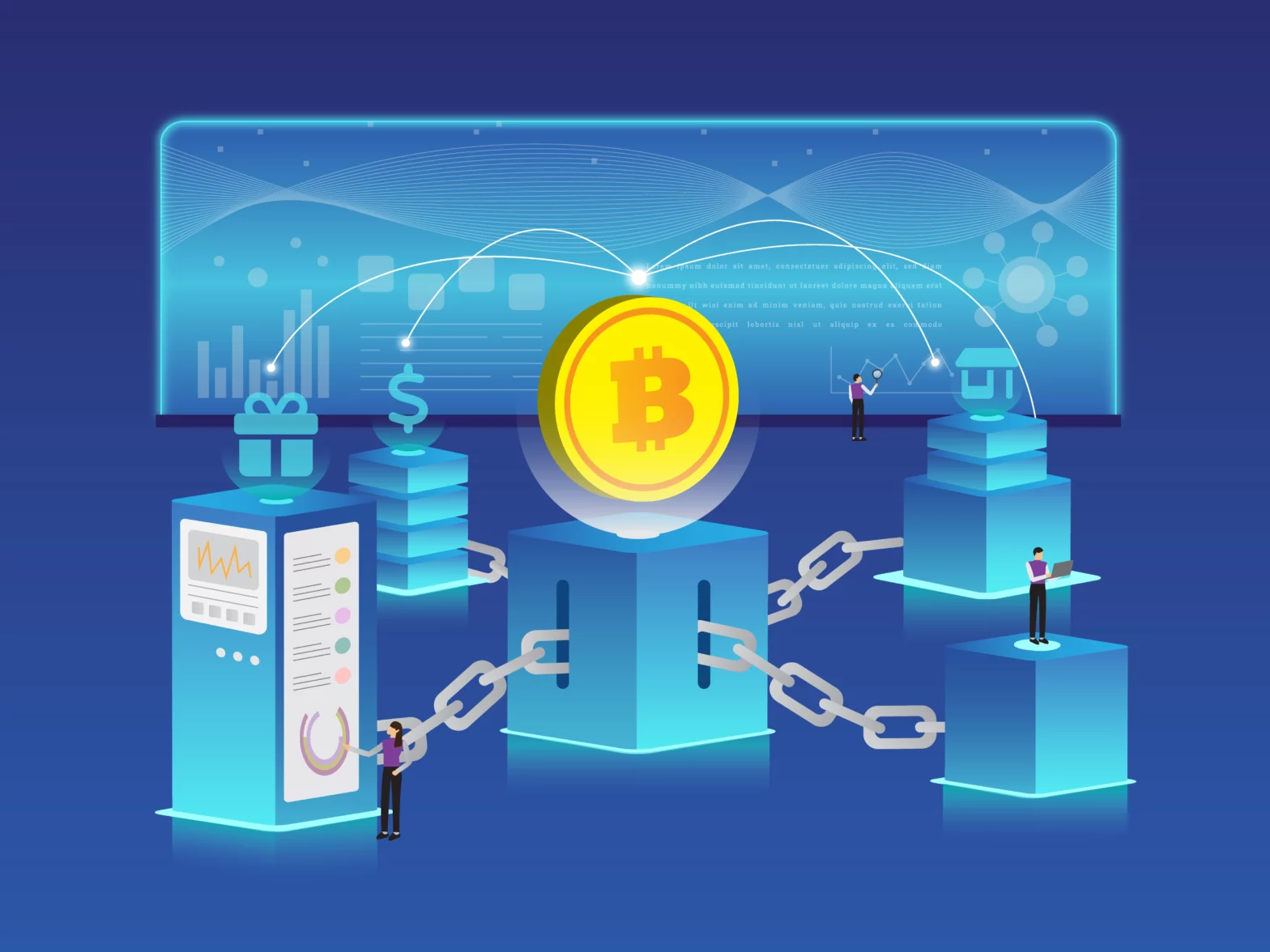Distributed ledger technology articulates the globe’s new realities. Since the population has already started reducing the use of physical cash before the Covid-19 pandemic, the health crisis has increased the volume and value of digital transactions. The digital payment sector is continuing its impressive growth in 2021 too, with transaction value increasing by 22% to more than $6.6 trillion(Expected). Europe and the United States are seeing the fastest growth in digital payments, catching up to China, where digital payment is expected to be worth nearly $3 trillion by 2021.
Banks‘ interest in blockchain extends far beyond cost savings or network efficiency. As it can serve as the foundation for evolution in RTGS, increasing the security of digital transactions and eliminating the possibility of errors, confusion, double counting, and fraud in record keeping. Accounting and auditing are examples of industries taking advantage of blockchain adoption in banking and finance.
Banking institutions are investigating the use of blockchain technology in a variety of business areas, including payment, trading platforms, transaction-based processes, capital inflows, and online payment. Governments, in particular, will become engaged facilitators rather than commanders. The legacy pricing and exchange rate models will be altered as financial systems blockchain adoption in banking and finance accelerates.

Better information exploration: Because of its standardized recording mechanism, blockchain in banking and finance enables banks to predict and mitigate liability risks. Because of blockchain’s anonymity, cryptography, security, and ability to store large amounts of data, banks can view any data entered on the distributed ledger network by other banks or network members. This will provide banks with data on their customers, both banked and unbanked, resulting in more informed and faster decision-making and credit allocation processes, lowering banks’ credit risks in the long run.
Regulatory compliance: Blockchain increases the level of compliance automation and improves the accuracy of transaction authorization.
Improving the KYC process: Blockchain cryptographic algorithms secure shared data, allowing banks to create a centralized shared repository of always up-to-date customer identity data. Blockchain in banking and finance improves the KYC and AML processes, increase interoperability among different banks across countries, reduce administrative costs, and, most importantly, reduce data duplication, lowering infrastructure costs. The Money Laundering Directive (MLD) necessitates continuous monitoring and updating of consumer data. Consumers’ security is ensured by stringent internal controls. If properly implemented, blockchain will be extremely useful in meeting standards.
Improved transaction speed: Verified and timely available blockchain data significantly improves transaction settlement time efficiency. Traditional roles such as intermediaries will be challenged, while new advisory functions will be introduced. Because of the certainty that blockchain provides, the possibility of direct transacting for both individuals and corporations is envisaged, enabling faster, simpler, and more secure payments. There is no agreement in the banking industry regarding blockchain transaction capacity.
Smart contracts: By utilizing blockchain’s smart contracts, traditional contract execution and resolution issues will be reduced, with significant efficiency and cost improvements, as well as the introduction of new automated contractual processes. Banks should implement smart contracts solutions to avoid losing their role in contract management in the future, as it is expected that blockchain and smart contracts will take root in the modernization of processes.
Ensures consistency: With the blockchain’s encryption process agreement, timestamp security and inspection enhanced to become continuous in real-time. It can examine 100 per cent of transactions rather than the traditional random statistical sampling. Auditors are playing a more active role in data security policies and decision-making processes. Blockchain is helping them efficiently. In comparison to current highly secretive processes, blockchain technology has the potential to make banking processes more transparent and secure. High levels of transparency achieve by locking the blocks, providing full historical data access, authorization privileges, and making changes publicly visible to all parties. Blockchain will pave the way for the global banking industry. Real-time auditing, automated financial reporting, prompt action on compliance violations, and real-time communication between banks and regulators are all possible with blockchain.
The potential returns about using blockchain technology in banking and finance include faster transaction speeds, improved security, transparency, and lower transaction costs, with groundbreaking predictions to redefine systems and change the fundamental structure of the current economic environment.
The overall sector is expected to continue its impressive growth in 2022, The digital payments market is expected to reach $10.5 trillion in the next four years. Blockchain is a game-changer of the banking industry because it allows for unmanipulated real-time data access with conventional wisdom verification, particularly in the area of digital payments. The banking industry is moving into blockchain technology, as evidenced by emerging bank-based blockchain projects and partnerships. For sure, this will dramatically alter the financial industry. According to McKinsey & Company, blockchain-based solutions for customer onboarding can save retail banks up to $1 billion in operating costs globally and reduce regulatory fines by $2 billion to $3 billion (exhibit). Furthermore, we anticipate that blockchain solutions will reduce annual fraud losses by $7 billion to $9 billion.
Banks and financial institutions are serious about embracing blockchain technology, but they are unclear how they will implement the new disruptive technology. MSRvantage intends to investigate and propose an adoption model for the banking industry in order to highlight successful adoption factors and overcome adoption challenges. In order to provide the industry with an innovative model, it will facilitate the smooth and successful adoption of new disruptive technology.
Recent posts


Cultivating Sustainability: The Role of Traceability Solutions in Revolutionizing Agriculture Practices
In an era where the global population is on the rise and environmental concerns are at the forefront of discussions, the need for sustainable agricultural
Read more 


Transforming Mining: Risk Mitigation with Blockchain Technology
The mining industry is essential to modern life, providing the raw materials for everything from smartphones to infrastructure projects. However, it's also known for its
Read more 


The Power of Supply Chain Mapping Using Blockchain in Mining
The mining industry is a complex and critical sector that forms the backbone of many global supply chains. It encompasses the extraction, transportation, and processing




